Fly fishing can seem overwhelming at first. Truth is, it’s not. Learning how to fly fish is actually easy and fun as hell. And it won’t immediately empty your wallet. With the right gear and some fundamentals, you’ll be ready to pester farm-pond panfish and bass, fool hungry trout, or even pick fights with angry muskies as soon as this spring. But you can’t catch fish if your line isn’t in the water. Here’s how to get started.

Choosing a Fly Rod
Fly rods come in a range of weights from 2 to 14 or higher for special circumstances, and each weight is designed for a specific size of fish. The term “weight” does coincide with the actual, physical weight of the rod and line, but a more practical way to look at it is the bigger the species of fish, the heavier the rod. Rock-hopping around tiny creeks or mountain streams for brook trout no longer than your hand calls for a rod weight of 2 to 4. If you are in the Florida Keys hoping to hook a tarpon as big as a teenage boy, an 11- or 12-weight rod is a must.
Where to start
The best place to start is right in the middle. Every fly-rod manufacturer has a standard lineup that includes 5, 6, and 7 weights, and the typical rod length is 9 feet. There are also saltwater options, but they tend to be higher weight. The benefit of a midweight rod is its versatility. They are easy to learn how to cast — every introductory casting video or lesson typically starts with a 5-weight. Fives, 6s, and 7s can also be used for panfish, bass, trout, perch, pickerel, catfish, and most any other fish you’d find in your local body of water. You don’t need to specialize just yet.
Entry level is okay
Many manufacturers have several rod lines available, which range from entry-level to ultra-high-performance with price tags to match. Most rods also come in four sections so that they travel and store easily. Some manufacturers offer entry-level packages that include a rod, reel, fly line, tippet, and a few flies, which are affordable and not a bad way to start. Remember, you don’t have to go for the Ferrari out of the gate. That trusty Chevy Cavalier got you everywhere in high school and taught you how to drive. Fly rods are no different.
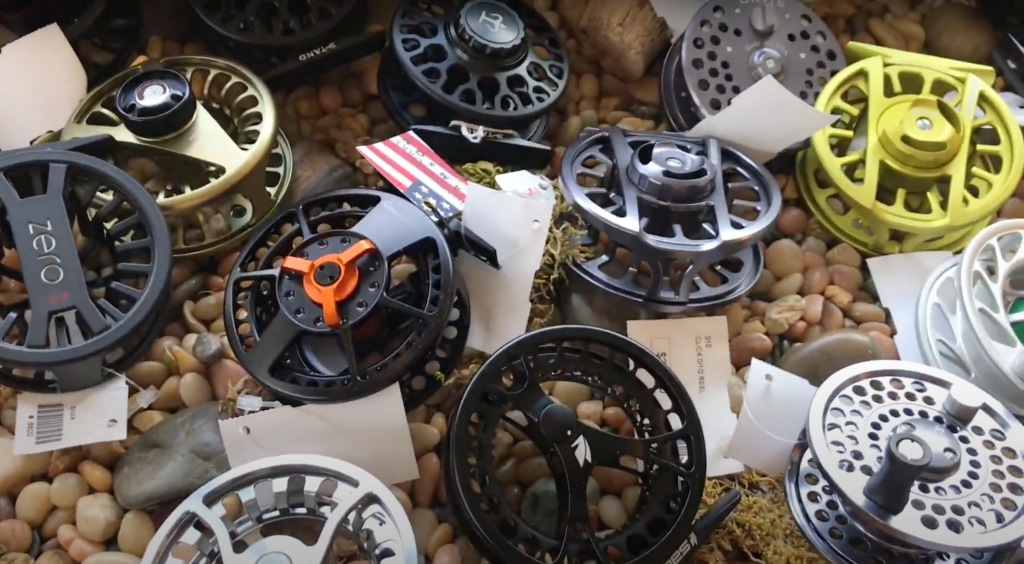
Choosing a Fly Reel
It’s been said that fly reels are essentially glorified fly-line holders. In the majority of fishing situations, this is true. But there are other functional benefits and considerations that are important when deciding which reel to pair with your fly rod.
Reel weight to rod weight
To start, fly reels come in a range of sizes that correspond with the range of rod weights. Each reel is designed to an optimal physical weight as well as a size that will fit the appropriate fly line and backing for the rod you’ve selected. In the case of a 5-weight rod, a 5-weight reel will balance exactly and give you the flexibility and room to pair it with a line or rod size above or below if you expand your arsenal.
Large or standard arbor
Reels also come in large-arbor and standard-arbor models. The arbor is the spindle in the middle of the reel that the backing and fly line wind around. The standard arbor is how most early fly reels were made. The large arbor was created to pick up more line with each turn of the reel handle and minimize the amount of “memory” in the fly line. Standard arbors are fine when you have to retrieve line quickly. Large arbors minimize line coiling and knotting when it’s off the reel. In truth, you won’t be wrong no matter which you choose. But when epic battles with big fish start happening, you’ll want a large-arbor reel on your rod.
Deciding on a drag
The drag on a fly reel is something that you won’t really appreciate until you actually have to use it (see “epic battles” above). The drag is the adjustable tension inside the reel that controls how easily line can be pulled from your reel when you’re fighting a fish. Too tight and your line will break, too loose and the fish will run to the next time zone.
A closed disc drag system allows for easy fine-tuning when you’re fighting larger fish and generally doesn’t require maintenance beyond rinsing your reel in the sink after a day of fishing. A “click-and-pawl” design has a small, open spring-tensioned gear system that offers a small amount of resistance, making it ideal for smaller water and fish. Click-and-pawl will be the less expensive option, but a reel with a disc drag system will give you more versatility and durability in the long run.
A question of looks
The physical look of a reel with a disc drag and one that’s click-and-pawl are distinctly different, too. The click-and-pawl reel will look more traditional with closed sides in most cases. The disc drag reel will be made of machined aluminum or another lightweight composite material and come in more designs and colors than you can shake a stick at. Choice is merely a matter of preference at that point.
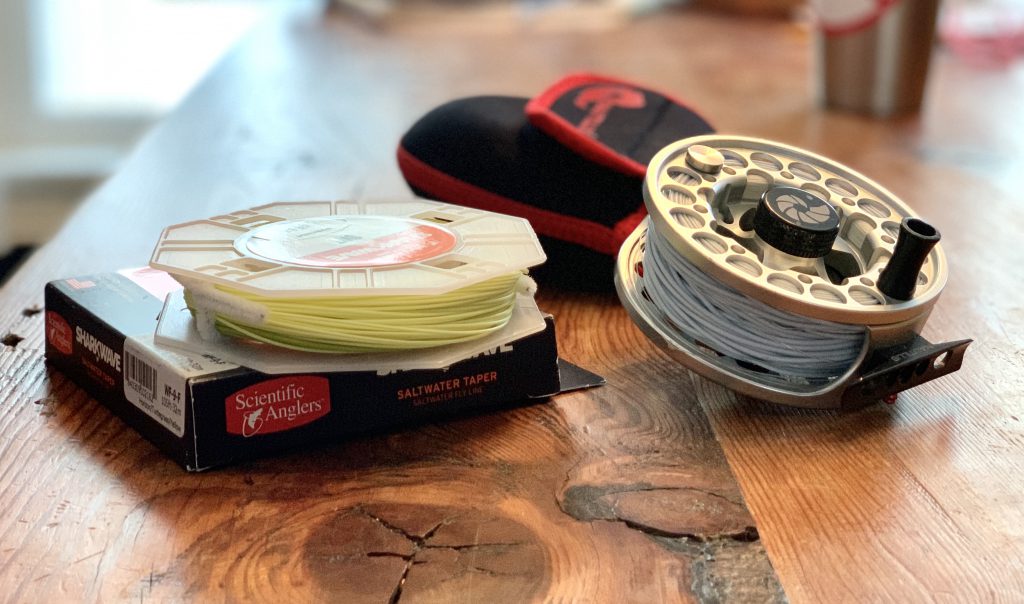
Understanding Fly Line
Every fly rod needs the appropriate weight of fly line in order to work properly. If a fly rod doesn’t have the right line on it, casting is going to be a chore.
Balance from backing to fly
For our midweight fly rod, say a 5-weight, we’re going to need a weight-forward, floating 5-weight line. Prior to putting the fly line on the reel though, you’ll need to wind roughly 125 yards of backing onto the reel. The backing takes up space on the arbor to help with faster retrieval of the fly line and also acts as an extension of the line if a strong fish goes for a long, unstoppable run. That’s called “taking you into the backing.” Your leader is the clear 6-foot to 9-foot tapered line that connects to the fly line on one end and the fly itself on the other.
Use your local fly shop
While there are a ton of other specialty lines available, this equation can be applied for matching the fly line to whichever rod weight you choose. The best way to ensure you get your reel set up correctly is to visit your local fly shop. If you don’t have one locally, there are many shops that you can find online that will get you set up with a reel, backing, fly line, and leader complete and shipped right to you. If you’re a learn-by-doing type of person, DIY is always an option. Do yourself a favor and make sure you learn a couple of basic fly-fishing knots as well, like the clinch and surgeon’s.
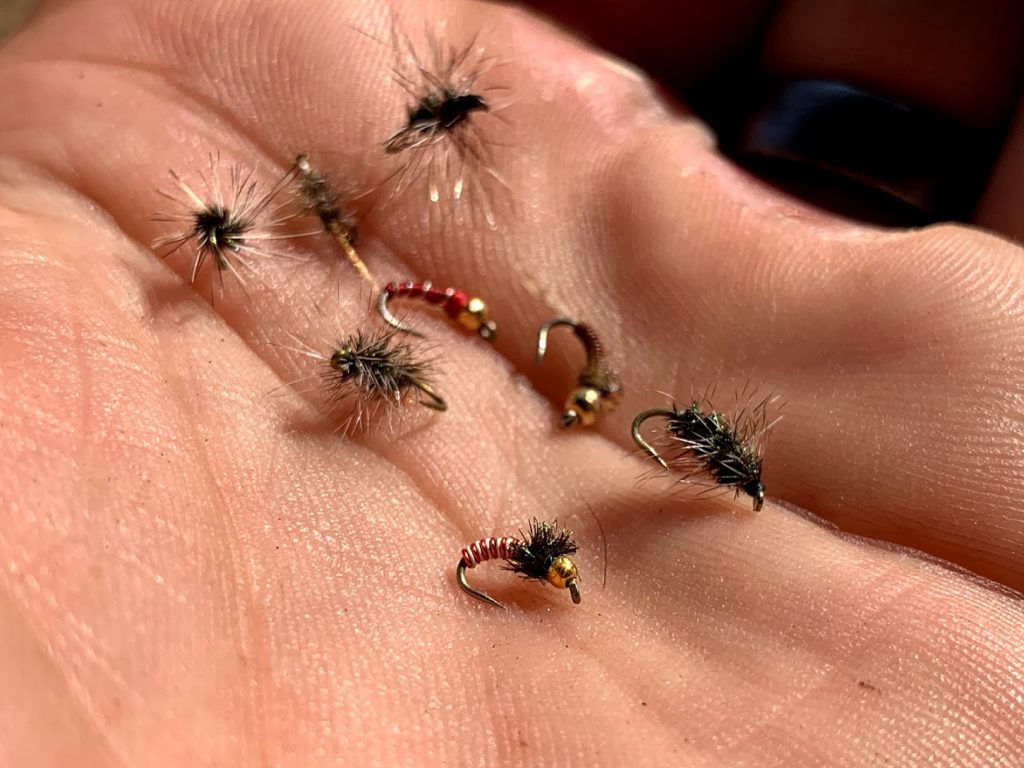
Beginner Flies
Understanding flies and the bait or bugs that they imitate is an art in itself. Fly anglers are always trying to “match the hatch” on their streams, rivers, or lakes — essentially trying to identify what the fish are eating. They could be after minnows, crayfish, stoneflies, mayflies or caddis, ants, mice, or, in the case of some muskies, ducklings. They could be on the bottom, on the surface, in fast or slow current, or in the sun or shade. The challenge for any fly angler is to have a selection of possible flies on hand that will most likely entice a strike.
A good start would be a selection of Woolly Buggers, some small, hard-bodied poppers, a few bead-head pheasant tail nymphs, and Clouser minnows. You can buy flies individually online or at your local fly shop, but preselected assortments are a simple and effective way to go.
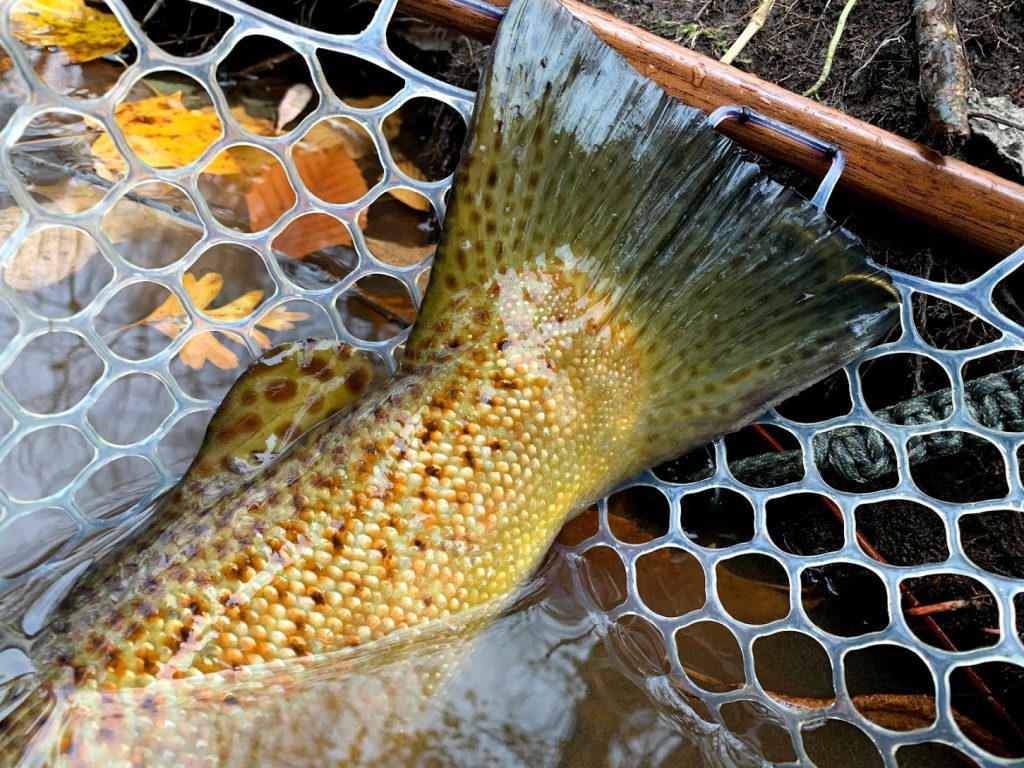
Recommended Starter Kit
Waders and wading boots are important if you’re fly fishing in a cold river but not as much if you’re drifting in a canoe or casting from the bank of a farm pond in July. Chances are good you’ll want a good net with a rubber basket that won’t harm the fish if you’re not planning on keeping them. A waterproof pack for a water bottle and the day’s gear. Forceps for removing hooks, nail clippers for trimming your leader after you tie on a fly, polarized sunglasses, a wading staff, sun gloves — the list grows long. The good news: to learn to cast and catch fish, all you need is a rod, reel, line, and some flies. Here are a few recommendations.
Orvis Encounter fly-fishing kit, $295
Having a complete setup expertly thought out and collected for you is the best way to ensure you get exactly what you need: rod, reel, line, leader, tippet, flies, landing net, and other river essentials all in one. Orvis is one of the pioneers in fly-fishing gear and stands behind its quality and durability. Bottom line: This is worth the slightly higher investment for many years of use.
Cabela’s Prestige fly-fishing kit, $179.99
Another all-in-one kit to get you geared up and on your way, the Cabela’s outfit has rod, reel, line, leader, flies, gear pouch, and river essentials. Known more for hunting and conventional angling, Cabela’s has decent gear for fly fishing that will serve the occasional fly angler well. Bottom line: The combo will serve its purpose, but durability is not a strength. It’s a less expensive entry point, with fewer essentials.
Umpqua fly selections, $12.95 and up
Don’t be alarmed when you see the number of options available. Fly assortments like this are traditionally grouped by species of fish being targeted. These options will get you thinking about where you’ll have access to fish and what you’ll be fly fishing for — always a great way to stay organized and get only what you need.
Read Next: Fishing the Frank: A Fly-in, Fly-Fishing Adventure in Idaho’s Largest Wilderness

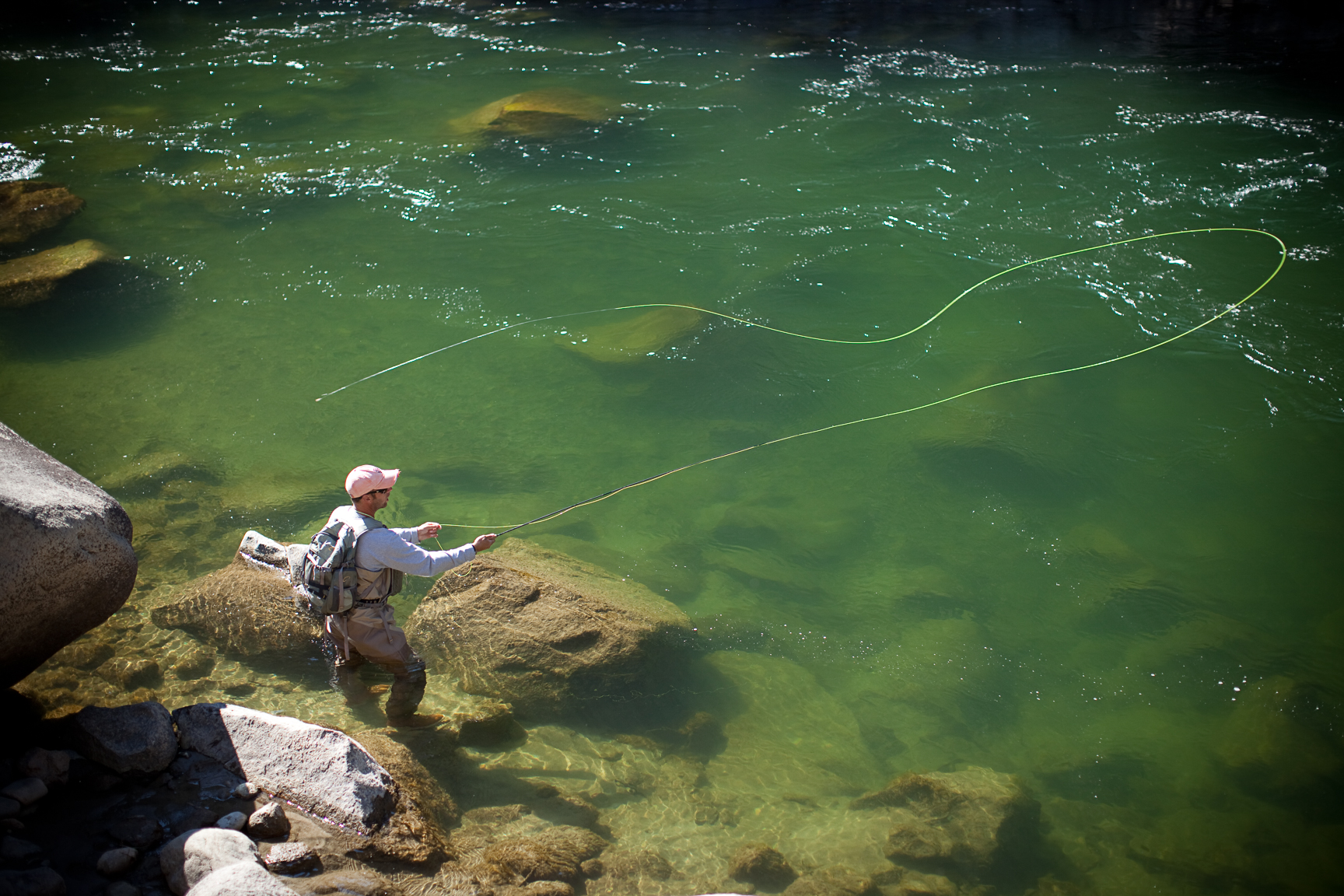
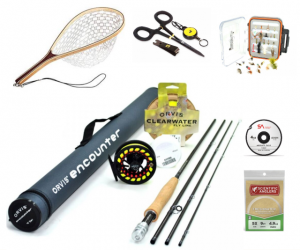
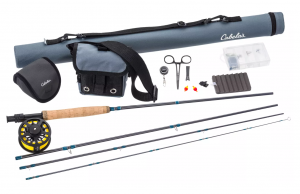
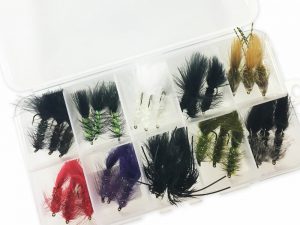

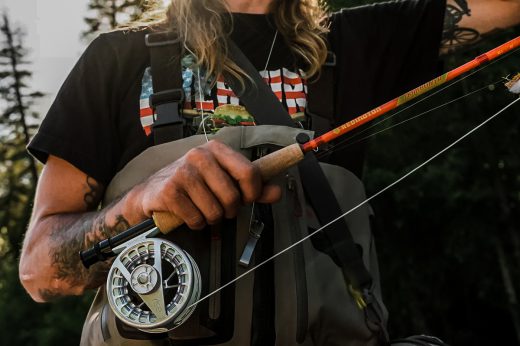
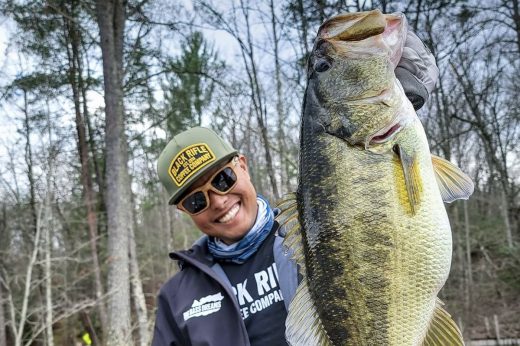
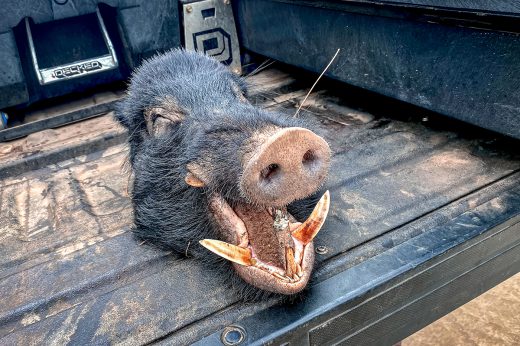


Comments